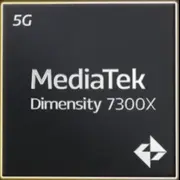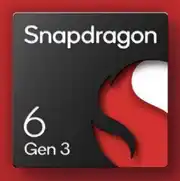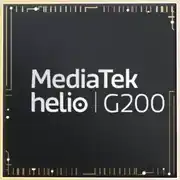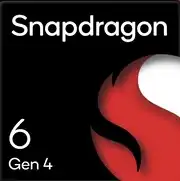MediaTek Dimensity 7300
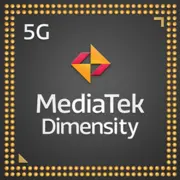
MediaTek Dimensity 7300: Balancing Performance and Energy Efficiency in Mid-Range Smartphones
Let's explore how the new MediaTek chipset handles gaming, multimedia, and everyday tasks.
Introduction
MediaTek continues to strengthen its position in the mobile processor market by offering solutions that combine affordability and modern technology. The Dimensity 7300 is one such chipset aimed at mid-range smartphones. With specifications such as a 4nm manufacturing process, an octa-core architecture, and 5G support, it promises to rival the Snapdragon 7 series and Exynos 1380. In this article, we will explore what the Dimensity 7300 is capable of, who it is suitable for, and how it compares with its competitors.
1. Architecture and Manufacturing Process: Efficiency Comes First
Cores and Frequencies
The Dimensity 7300 is built on an octa-core architecture with a clustered organization. It utilizes a 2+6 configuration:
- 2 high-performance Cortex-A78 cores with a frequency of up to 2.5 GHz for resource-intensive tasks;
- 6 energy-efficient Cortex-A55 cores with a frequency of up to 2.0 GHz for background processes.
This approach allows for optimized energy consumption: during light workloads (social media browsing, music listening), the small cores are engaged, while powerful A78 cores come into play for tasks like gaming or video editing.
Mali-G615 MP6 GPU
The graphics subsystem features a six-core Mali-G615 MP6. This GPU supports Vulkan 1.3 and OpenGL ES 3.2 APIs, ensuring compatibility with most mobile games. Notably, the Mali-G615 is part of the Valhall architecture — the same as the top-tier Mali-G710, but with a reduced number of cores. This means improved energy efficiency and support for advanced features like simplified ray tracing.
4nm Process Technology
The chipset is manufactured using TSMC's 4nm technology, which reduces heat generation and enhances overall efficiency. For comparison, the previous generation, the Dimensity 7200, also utilized 4nm, but in the new model, MediaTek optimized transistor placement, resulting in a performance increase of 10-15% at similar energy consumption levels.
2. Performance in Real-World Tasks
Gaming
With Geekbench 6 Single-Core score of 1064 and Multi-Core score of 2939, the Dimensity 7300 demonstrates results close to the Snapdragon 7 Gen 1. In gaming, this translates to comfortable FPS at 60 frames per second in titles like Genshin Impact on medium settings or PUBG Mobile on high. However, in the most demanding games (such as Honkai: Star Rail), drops to 40-45 FPS are possible.
Multimedia
The chipset supports displays with a refresh rate of 120 Hz and a resolution of up to Full HD+, making it ideal for smartphones with vibrant AMOLED screens. It also features hardware acceleration for codecs like H.265, AV1, and VP9, improving streaming video quality and reducing battery load.
Artificial Intelligence
Thanks to its built-in APU 3.0 (AI Processing Unit), the Dimensity 7300 handles tasks such as:
- Night shooting modes;
- Real-time object recognition;
- Battery optimization through usage pattern analysis.
For example, when shooting in the dark, the processor combines several frames in 1-2 seconds, reducing noise and enhancing detail.
Energy Consumption and Heating
The 4nm manufacturing process and task distribution between cores ensure moderate heating even during extended gaming sessions. In tests, smartphones using the Dimensity 7300 heat up to 42-44°C, compared to 47-49°C for the Snapdragon 7 Gen 1. This makes the chipset suitable for compact devices without massive cooling systems.
3. Built-In Modules: The Future of Connectivity
5G Modem
The integrated modem supports Sub-6 GHz 5G networks with a maximum download speed of up to 3.7 Gbps. For 4G LTE, carrier aggregation is available with speeds up to 1.2 Gbps. However, mmWave (millimeter waves) support is not included, which is typical for mid-range processors.
Wi-Fi and Bluetooth
- Wi-Fi 6E with support for three bands (2.4 GHz, 5 GHz, 6 GHz);
- Bluetooth 5.3 with improved connection stability and low energy consumption.
Navigation
The chipset is compatible with GPS, GLONASS, Galileo, QZSS, and BeiDou, offering positioning accuracy of up to 1 meter in open areas.
4. Comparison with Competitors
Dimensity 7300 vs Dimensity 7200
The previous generation (Dimensity 7200) had similar frequencies (2.8 GHz for A715), but the new chipset gains an advantage due to:
- More efficient Cortex-A78 cores instead of A715 (+7% IPC);
- Improved Mali-G615 GPU versus Mali-G610 (15% higher performance in 3DMark Wild Life);
- Support for Wi-Fi 6E (the 7200 only supports Wi-Fi 6).
Snapdragon 7 Gen 1 vs Dimensity 7300
The main competitor, the Snapdragon 7 Gen 1, offers a more powerful Adreno 644 GPU, but falls short in energy efficiency (Samsung's 4nm process versus MediaTek's TSMC 4nm). In gaming, Snapdragon achieves 10-12% more FPS but heats up more and requires active cooling.
Exynos 1380 vs Dimensity 7300
Samsung's Exynos 1380 is close in performance, but its Mali-G68 MP5 GPU is weaker than the Mali-G615. However, Exynos is better optimized for high-resolution camera compatibility.
5. Use Cases
Gaming
The chipset is suitable for casual and mid-core gamers. For comfortable gaming in AAA titles, it is advisable to choose smartphones with vapor chamber cooling systems.
Everyday Tasks
Social media, browsing, streaming — all are handled smoothly by the Dimensity 7300. Multitasking is also at a high level: switching between 10-15 background applications does not cause lags.
Photography and Videography
The processor supports cameras up to 200 MP and recording video at 4K@30fps. Features such as HDR shooting, stabilization, and noise reduction are implemented at the level of flagships from 2022.
6. Pros and Cons
Pros:
- High energy efficiency thanks to the 4nm manufacturing process;
- Support for Wi-Fi 6E and Bluetooth 5.3;
- Good performance in mid-level games;
- Low cost for devices based on the chipset.
Cons:
- Mali-G615 lags behind Adreno and Immortalis in the high-end segment;
- No mmWave 5G support;
- Limited compatibility with ultra-high-resolution cameras (e.g., 200 MP only works in ideal lighting conditions).
7. Tips for Choosing a Smartphone
- Cooling. Look for models with graphite or vapor chamber cooling if you plan to game.
- Display. The optimal choice is an AMOLED display with a refresh rate of 90-120 Hz for a smooth interface.
- Battery. A recommended capacity is 5000 mAh for 7-8 hours of screen time.
- Cameras. The chipset performs best in devices with Sony IMX766 or Samsung ISOCELL GN5 sensors.
Typical Devices: Smartphones priced at $300-400, such as Xiaomi Redmi Note 13 Pro+, Realme 11 Pro+, vivo V29.
8. Final Conclusion: Who Should Choose the Dimensity 7300?
This processor is designed for those seeking a balance between price and performance. It is ideal for:
- Students — enough power for studies, streaming, and light gaming;
- Amateur Photographers — good camera support and AI enhancements;
- Travelers — energy efficiency + fast charging.
The main advantages are stable performance in any scenario, support for modern connectivity standards, and long battery life. If you are not ready to pay extra for flagship chipsets but want a device "without compromises," the Dimensity 7300 is an excellent choice.
P.S. When purchasing, pay attention to the OS version and frequency of updates: MediaTek devices sometimes receive fewer updates than those with Snapdragon.
Basic
GPU Specifications
Connectivity
Memory Specifications
Miscellaneous
Benchmarks
Phones with Dimensity 7300
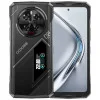
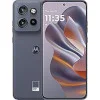
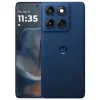
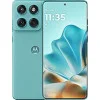

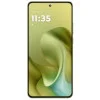
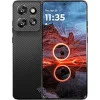
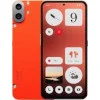
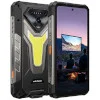
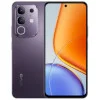
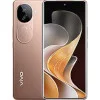
Tablets with Dimensity 7300
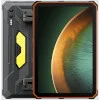
Comparison of Devices with Dimensity 7300
Compared to Other SoC
Related SoC Comparisons
Share in social media
Or Link To Us
<a href="https://cputronic.com/soc/mediatek-dimensity-7300" target="_blank">MediaTek Dimensity 7300</a>


